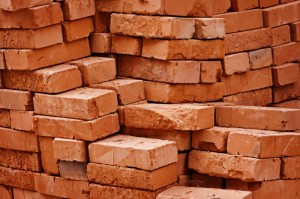In school, you learn about anatomy, how we as humans and other organisms are made to form one living, functioning being. Even though a fireplace and chimney are not living things, they too are built up of various parts that equal to be one unit. There are two types of fireplaces that you can have in your home. There are masonry fireplaces, which are built of bricks or stone, and then there are factory built which are constructed of a lightweight metal. No matter what type of chimney you have, they all require their yearly chimney sweep and maintenance, which can be done by Fire Safe Chimney Sweep.
A masonry fireplace has a firebox that is built using individual firebrick, a brick chimney that sits above the roof, and a brick pyramid-shaped top. These structures can easily become massive and weigh up to seven tons. They require little care and periodic maintenance, and are long-lasting and visually appealing. The prefabricated fireplaces are a different type of invention as they are newer and built with a more modern perspective. They are also sold as a set, and if you do not use the entire package you risk chances of your fireplace being unsafe. While they consist of basically the same parts, they have major differences. A prefabricated unit requires more attention than a masonry structure, and when the metal comes into contact with a chimney fire, it will damage easier than a brick structure.
Now that you know about the structure of the chimney, let’s take a closer look at the other parts needed to make a working unit. Chimney crowns are important because they protect your chimney from water damage. When water comes into contact with a chimney it can lead to mold and mortar deterioration, which will then cause the structure to weaken. The flue must always be in working order so that exhaust gases can escape the house, and should also have a liner to reduce flammable debris. The smoke chamber is also important because it is what compresses byproduct of combustion into a smaller space to eliminate back draft. A chimney damper should always be installed to make sure you are not losing energy when the fireplace is not in use. If you ever notice a problem with any of these parts, you should call a professional, as you do not want it turning into something more threatening toward you or your home.


Recent Comments